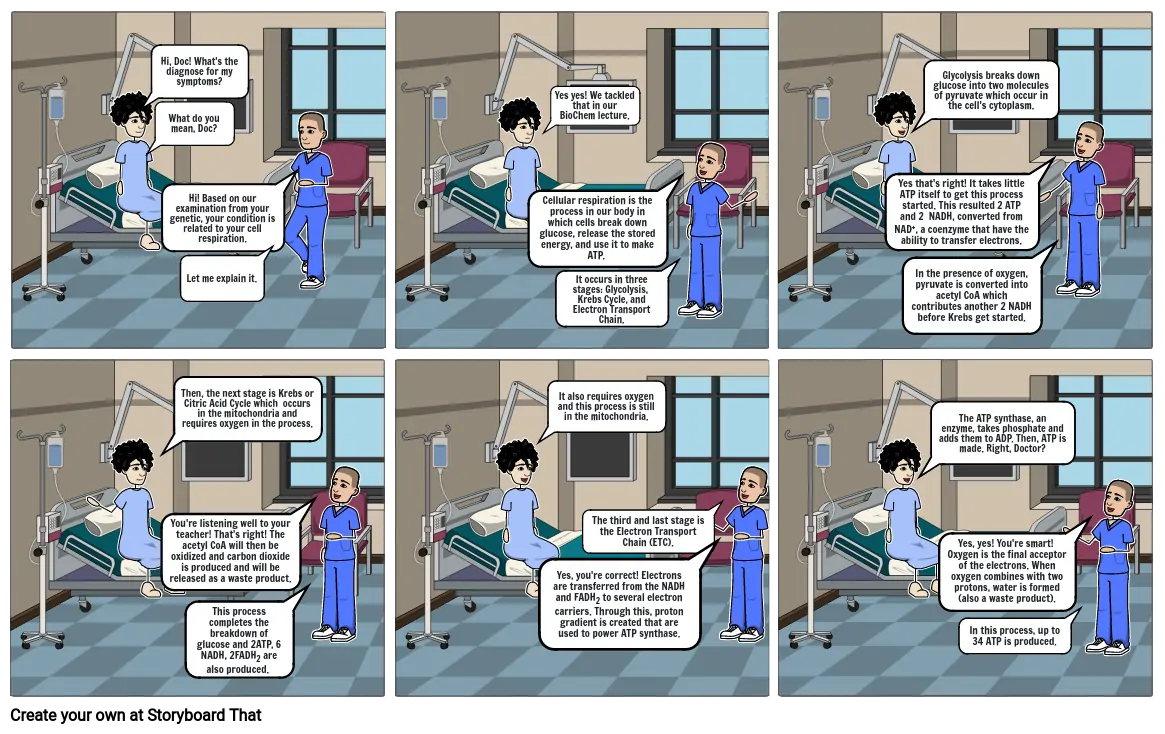Cellular Respiration

Storyboard Text
- Hi, Doc! What's the diagnose for my symptoms?
- What do you mean, Doc?
- Hi! Based on our examination from your genetic, your condition is related to your cell respiration.
- Let me explain it.
- Cellular respiration is the process in our body in which cells break down glucose, release the stored energy, and use it to make ATP.
- Yes yes! We tackled that in our BioChem lecture.
- It occurs in three stages: Glycolysis, Krebs Cycle, and Electron Transport Chain.
- Yes that's right! It takes little ATP itself to get this process started. This resulted 2 ATP and 2 NADH, converted from NAD+, a coenzyme that have the ability to transfer electrons.
- In the presence of oxygen, pyruvate is converted into acetyl CoA which contributes another 2 NADH before Krebs get started.
- Glycolysis breaks down glucose into two molecules of pyruvate which occur in the cell's cytoplasm.
- Then, the next stage is Krebs or Citric Acid Cycle which occurs in the mitochondria and requires oxygen in the process.
- You're listening well to your teacher! That's right! The acetyl CoA will then be oxidized and carbon dioxide is produced and will be released as a waste product.
- This process completes the breakdown of glucose and 2ATP, 6 NADH, 2FADH2 are also produced.
- It also requires oxygen and this process is still in the mitochondria.
- Yes, you're correct! Electrons are transferred from the NADH and FADH2 to several electron carriers. Through this, proton gradient is created that are used to power ATP synthase.
- The third and last stage is the Electron Transport Chain (ETC).
- The ATP synthase, an enzyme, takes phosphate and adds them to ADP. Then, ATP is made. Right, Doctor?
- Yes, yes! You're smart! Oxygen is the final acceptor of the electrons. When oxygen combines with two protons, water is formed (also a waste product).
- In this process, up to 34 ATP is produced.
Over 30 Million Storyboards Created

